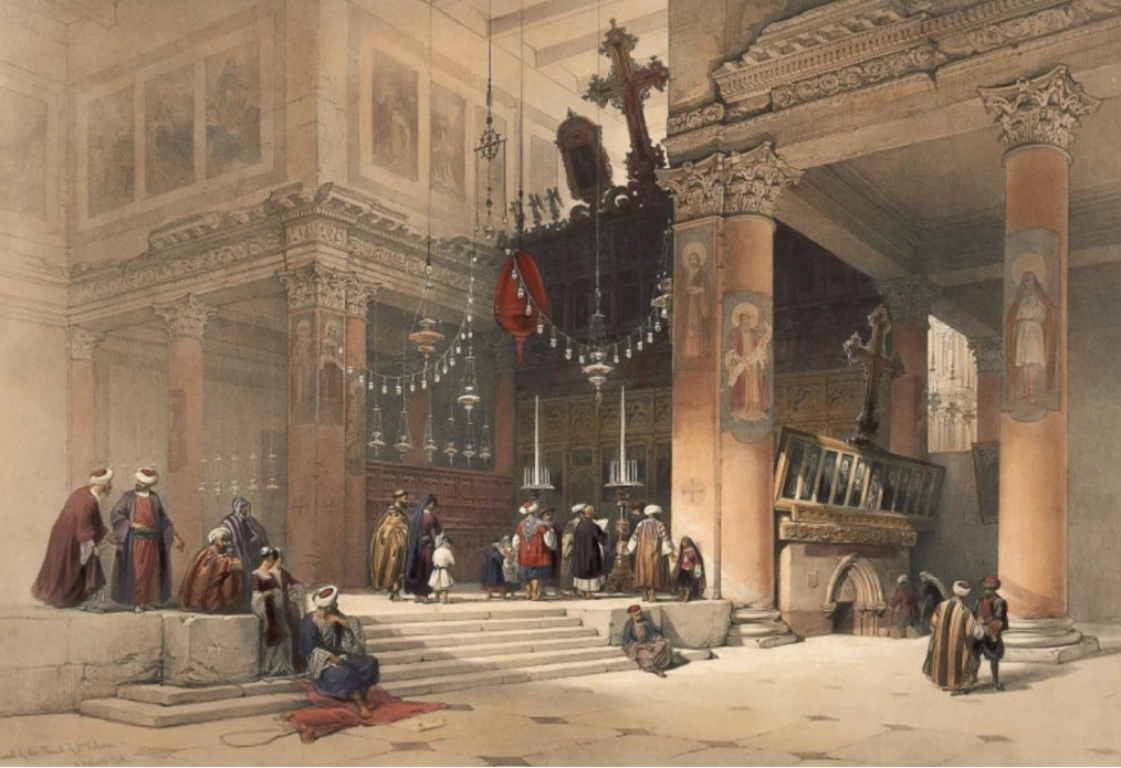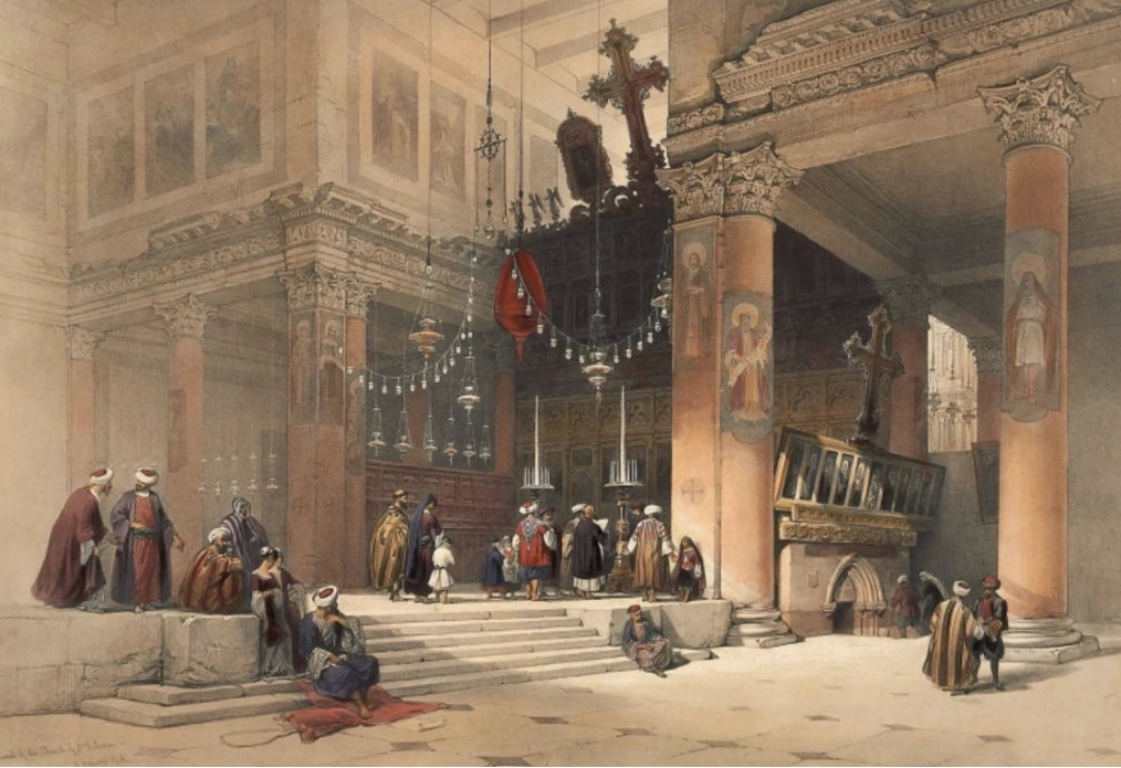

David Roberts RA
Chancel of the Church of St Helena
First Edition lithograph
Full plate: 87
Presented in a acid free mount
In his journal for the 5th of April 1839 Roberts wrote about the Church of St Helena (also known as the Church of the Nativity) as follows: ‘The Church of the Nativity is in form very similar to the basilica church of Saint Paul at Rome. A temporary screen divides the nave from the transepts and choir, and in the latter is the Greek church which appears to be nearly as old as the rest of the Church. In the transepts are the chapels of the Armenians and Latins which are very poor, immediately beneath the former is the Chapel of the Nativity, the space is exceedingly small and hung with lamps but seems poor after that of Mount Sinai.'
The church was originally commissioned in 327 by the Emperor Constantine and his mother, Helena, and was completed in 339. On the 6th of April, Roberts wrote: 'Today while I was sketching the interior of the chapel, a man arrived from Jerusalem with the sacred fire, which the priests say comes from heaven; and the whole of the Greek Christians turned out to receive him, carrying banners, and headed by their priests. All were soon in the greatest excitement, each struggling to obtain the first light.' According to Greek Orthodox tradition, the Holy or Sacred Fire is a miracle which happens annually in the Church of the Holy Sepulchre on the day before Orthodox Easter: a flame ignites spontaneously over the tomb of Christ and turns into a column of fire from which candles are lit by the priests and the faithful. The flame is then distributed to Greek and Russian Orthodox churches as far afield as Odessa. In this lithograph Roberts shows the pilgrims and priests awaiting the arrival of the Holy Fire.

